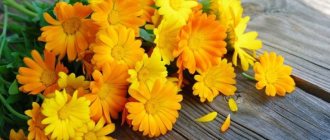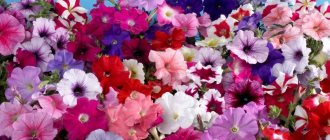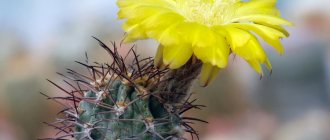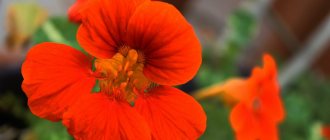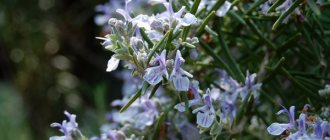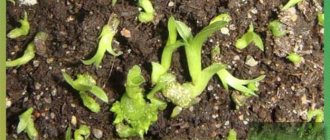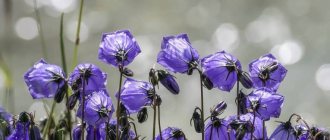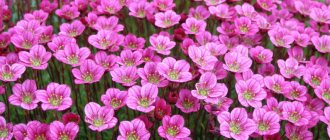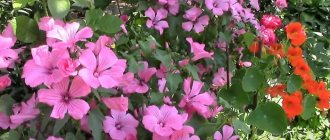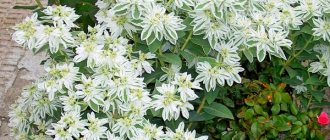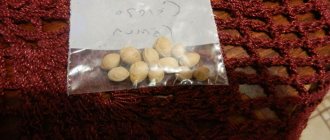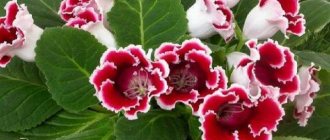Nasturtium is a versatile flowering plant. It can be grown as a decorative plant, used as a vegetable or seasoning, to “scare” pests in the garden with it, and also used for medicinal purposes. You can grow nasturtium at the dacha and in flowerpots on the balcony, in a pot among the greenery in the kitchen and in the apothecary garden. Its bright aroma allows it to be used as a flavoring agent for oils; besides, insects cannot tolerate it at all, and this property can also be used in the garden and in everyday life. How to grow nasturtium from seeds, how to properly plant it as seedlings, where to use it and how much effort it will require to grow is the topic of today’s conversation.
Let's get to know each other better
The second name of the plant is capuchin because of the shape of the inflorescences, which have an external resemblance to the outline of a monk’s hood. This is a herbaceous crop that is grown as an annual in mid-Russian latitudes. In shape it can be grass, subshrub or bush; there are also ampelous species with soft long shoots that can reach 4 m. The color palette is bright, carnival, with a predominance of warm tones. Currently, breeders have developed many varietal varieties and hybrids, including those with semi-double and double flowers, and presented in variegated colors. The flowering of capuchin lasts almost the entire summer, including the warm period of autumn.
Nasturtium is a natural fungicide. Many insects cannot stand its smell, so it can perfectly cope with the role of a garden “orderly”.
Features of nasturtium
Nasturtiums can be perennials or annuals. The main species includes created hybrids, which can be dwarf or giant. Classic nasturtiums are plants with dense stems, bright, strong buds:
- Leaves. They are arranged alternately, attached to the stems by long petioles;
- Flowers. Each bud is formed from 5 petals. The flowers are bisexual, axillary and have a strong aroma. Most often they acquire bright yellow or red shades;
- Seeds. The fruits ripen in boxes consisting of three segments. With their help, any varieties of nasturtium are grown.
Nasturtium is a special flower. It is not only an ornamental, but also an edible and medicinal plant, widely known for its ascorbic acid content. Cosmetic products are prepared from extracts of flowers and leaves that can smooth out facial wrinkles and help in the complex treatment of skin diseases.
Leaves, flowers, and stems are used to prepare wound-healing infusions and antibacterial decoctions. Many gardeners practice cultivation with further use exclusively for medicinal purposes.
One of the features of garden nasturtium is to repel insect pests, such as whiteflies, cabbageweeds, aphids, and Colorado potato beetles. Different varieties are often planted around fruit trees to prevent insect infestations.
In the south of France, the seeds are used for cooking. They are boiled and served as a seasoning for meat dishes, so nasturtium seeds can be seen not only in photos of garden plants, but also when studying culinary recipes.
The most popular types of nasturtium
Botanists count about 90 species of this genus. In addition to the basic species, there are many hybrids, which are mainly grown in culture.
Nasturtium Canarian (foreign)
A variety of ampelous form, the vine of which can grow up to 3 meters or more. It has good tenacity, can climb along a support, and is used in vertical gardening of gazebos, balconies, arches, etc. The stems are densely leafy, which makes it possible to use nasturtium of this type as a ground cover when growing horizontally. It blooms with bright yellow inflorescences with decoratively corrugated petals. In the conditions of central Russia, the seeds of this species do not ripen.
Golden ball
A compact and neat variety of nasturtium, valued for its abundant flowering. The flowers are golden yellow, varieties can be double or semi-double. Each bush blooms up to 10 or more inflorescences at the same time. In addition, this varietal variety is a real champion in terms of flowering duration. Used for borders and growing on balconies and terraces.
Large nasturtium
This species served as the basis for breeding work, which resulted in the creation of many new varieties and hybrids. It has a long and extremely fragile stem, which must be touched with great care. This variety also includes varieties with bushy shoots, in which case they grow much shorter, usually no more than 50-70 cm. The best varieties of large nasturtium:
- “Alaska” is a semi-shrub species up to 30 cm high. The flowers are large, deep pink or bright yellow. The leaf rosette is dense, the leaves are decorative, with a marbled color.
- "Vesuvius" is a variegated, low-growing variety with an interesting color. The petals are pink with multiple burgundy strokes.
- “King Theodore” has deep red buds, but simple, non-double type.
- “Salmon baby” is a semi-double varietal variety of ampelous type with salmon-colored buds.
- 'Peach melba' is a delightful hybrid with soft peach flowers set off by a reddish center.
Nasturtium cultivated
Under this name, hybrids obtained from crossing large and shield-bearing nasturtium are combined. The very fragile and highly branched stems of this species can be colored plain green or purple-brown. There is a big difference between the sizes of varieties and, of course, between the colors and shapes of their buds. Among them there are liana-like, dwarf, and tall bush capuchins.
The best varieties of cultivated nasturtium:
- “Gleming Mahagani” is a variety with neat compact bushes about 40 cm and terry buds of a fiery red color.
- "Golden Globe" - stands out strongly from other nasturtiums with spherical flowers of a shape that is not quite traditional for the culture. It blooms in yellow-golden color, forms a low clump up to 25 cm.
- “Moonlight” is a climbing varietal variety whose vines reach 2 m in length. The inflorescences are semi-double, pale yellow or moon-white.
Small nasturtium
As the name implies, it is characterized by more compact forms. Produces low-growing bushes with thin and fragile stems, while the leaves stretch towards the sun on long petioles. The buds are also small in size and often have a variegated color. The two most famous and popular varieties of this species are:
- “Cherry Rose” is a wonderful double variety with double buds painted blood red.
- "Black corduroy" - flowers of a very dark burgundy color, shining black. This variety is sometimes called "Black Lady".
Popular varieties
Professional flower growers are familiar with 25 varieties of flowers, but in fact there are about 90 species. The most popular and beautiful varieties are:
- Terry. The petals can be of different colors, and the shape resembles a star. They are often used to decorate summer cottages.
- short. This flower is a small bush 25-30 cm high.
- Ampelnaya. This is a climbing flower that is used to decorate vertical walls or residential buildings6 terraces, balconies. You can also place it in hanging flowerpots.
- Canary liana (canary). It has a number of significant differences: the flower has a curly and climbing stem, which can grow up to 4 m in one season. The canary needs vertical support. The flowers themselves are small, canary yellow.
- Alaska. This is a low-growing plant (only 25-30 cm in height) with unusual marbled leaves. The flowers are large, of various shades.
- Maiden beauty. A low bush 30-40 cm high. Beautiful semi-double flowers of different shades reach 5 cm in diameter.
- Birdie. This is a climbing vine that grows quickly (3.5 m in one summer). The flowers are small.
- Ladybug. The only variety with apricot-colored flowers with spots. Blooms all summer.
- Bush. The variety is ideal for landscape design.
- Salmon. Dense bush with a large number of branched shoots. The flowers have a delicate aroma and a delicate salmon color.
Use for pest control
In order for growing nasturtium in the country to have not only an aesthetic, but also a practical purpose, you should be guided by the following recommendations.
- If you plant nasturtiums around a bed of cabbage, then its harvest will be well protected from cabbage butterflies and whiteflies.
- To protect greenhouse tomatoes from pests, it is recommended to plant nasturtium near the entrance to the greenhouse.
- Capuchin flowers planted next to peonies will protect them from fungal infections.
- Nasturtium grown in their tree trunks is very beneficial for cherry and apricot trees. This will not only force pests to avoid this place, but will also enrich the soil with substances useful for the growth and development of these crops. When preparing the garden for wintering, it is enough to bury the plant remains of flowers in the same place where they grew.
- And if you use the remains of last year’s nasturtium in the spring to apply it to an area intended for planting potatoes, then the future harvest will have enhanced protection against late blight.
When growing nasturtium outdoors in pots (for example, on a balcony), possible winds must be taken into account. Fragile shoots easily break with any gust of wind, and in hanging varieties they become hopelessly tangled. You should not plant capuchin in open areas and balconies on high floors.
When to plant nasturtium seedlings
Each region and locality has its own sowing time. Sowing nasturtium seedlings is especially relevant for the northern regions, where summer begins a little later than in the central part of Russia. This allows you to get flowering in early summer.
Photo: Growing by seedlings allows you to achieve flowering in early summer.
Recommendations for sowing time for seedlings by region
To choose the sowing time yourself specifically for your site, remember: you need to sow about a month before planting in the ground.
| Region of residence | Sowing time |
| Central Russia (including the Moscow region) | The optimal period is from mid-April. |
| Siberia and the Urals | At the end of April or at the beginning of May, when all the return frosts have passed. |
| Southern regions | They begin to sow early, at the very beginning of April. |
These terms are suitable for gardeners who do not grow seedlings for sale. Those who use it for commercial purposes sow earlier than the deadlines indicated above.
Sowing nasturtium according to the lunar calendar
Many people rely on the Lunar calendar. It provides for the following dates for sowing nasturtium seedlings in 2022:
| Month | Favorable days | Unfavorable days |
| April | 9, 10, 13–15, 17–20, 25th. | 5–7, 11, 26, 27th. |
| May | 15–17, 22–25. | 3–5, 11th. |
Photo: Follow the dates of the Lunar calendar to get beautiful and healthy flowers.
How to grow nasturtium?
Since the crop is annual, it will have to be grown from seeds. It is possible to grow nasturtium both through direct sowing in open ground and through seedlings. The seeds of the plant are quite large, so planting them is easy.
How to plant and grow nasturtium seedlings correctly?
The time for planting seeds for seedlings is April. Seedlings grow quickly and are very fragile, and the root system is not very strong, so do not rush into early planting so as not to create problems with the future transfer of seedlings to open ground. You can calculate the timing of planting, taking into account the local climate, so that within a month after sowing it is possible to transfer the seedlings to the site.
It is best to practice growing crops such as nasturtium in peat tablets or cups. In the latter case, no more than 2-3 seeds are placed in each glass; if there are more shoots, the excess ones can be cut off with scissors. Planting depth is 1.5-2 cm. You should not place the box with seedlings in a hot place, the capuchin does not like this, but there should be plenty of light, otherwise the seedlings will stretch out unsightly. Care is carried out traditionally.
How to pick nasturtium?
It is best not to do this at all due to the increased sensitivity of the plant to mechanical stress. When planting is dense, excess bushes are removed using scissors.
Planting in open ground
The recommended sowing time is the third ten days of May, but the timing should be adjusted taking into account the region and seasonal weather. The nesting method is recommended for planting. The layout of the planting holes is about 20 cm, 3-4 seeds are planted in each of them. To speed up germination and protect against possible night frosts, you can cover the bed with film. Water the seedlings on the site with water heated in the sun.
A month after planting nasturtium, it will be possible to get its young edible shoots for your vitamin table.
Growing through seedlings: planting instructions
To grow strong seedlings, you need to prepare a container for planting (pots or cups), seeds and the right soil (it must be loose and fertile).
Step-by-step instruction:
- Seeds need stratification. They should be soaked in warm water (40°C) overnight or for a day (in this case the water will have to be changed once) in gauze or on a saucer, covered with a lid.
- Pour soil into the container and moisten it.
- Place 2-4 seeds in each cup and deepen them into the ground about 2 cm.
- Cover the top with soil and moisten again.
- Cover with film or glass to create a greenhouse effect.
- Place the glasses in a dark place with a temperature of 16-18°C.
- After sowing, it is necessary to ensure that the soil is always moist. Otherwise, the seeds will take a long time to germinate.
- The first shoots should appear in 10-14 days. Then the seedlings should be placed on a bright windowsill and watered regularly.
- Planting of seedlings is carried out at the same time as sowing seeds, when there is no threat of frost.
- The plant must be planted in previously prepared holes along with a lump of earth, then watered.
- Perform mulching.
Flowering through seedlings occurs faster.
Selecting a location
When choosing a place to grow nasturtium, there are two conflicting factors to consider. On the one hand, the flower loves places open to the sun, on the other hand, it is afraid of winds. In the shade, flowering will be faded and sparse, and when there are gusts of wind, the stems break very easily. Regarding the soil, the wishes boil down to good drainage, light structure and low acidity. You should not overly stuff the soil with organic matter, this will give an undesirable advantage towards green mass instead of flowering. But too poor lands will not give the desired result. The foliage will be small, and the planting will look half-bald, with the soil showing through.
Nasturtium seedlings grown in low light conditions subsequently suffer for a long time after being transplanted into the ground and may not produce color.
How to care for Nasturtium seedlings, what are the tips for growing them?
A specific stage of seedling growth is combined with specific instructions for its maintenance. At the first stage of seed growth, the containers in which they are placed need to be covered with polyethylene. This point is important because... triggers the growth mechanism due to the greenhouse effect. The first shoots will appear within two weeks. Until they appear, the soil must be moistened regularly, but only with a syringe or sprinkler.
The nasturtium seeds have sprouted, what to do next?
As soon as the first shoots appear, the film covering them is removed, and the container itself is placed in a bright place to provide the required amount of light. For proper growth, sunlight should illuminate the shoots for at least 12-16 hours. If there is not enough light for the sprouts, they will begin to stretch in length, then weaken and stop developing. From the moment the sprouts appear, the temperature is maintained in a certain way: it cannot be less than 18 degrees, but it cannot be above 22 either. The emerging shoots require constant watering, depending on the frequency of drying out of the soil.
How to feed Nasturtium seedlings?
For a luxurious and long flowering period, nasturtium needs to be fed with fertilizers. At the beginning of planting seeds, the application of mineral fertilizers containing nitrogen is required, but when the shoots have sprouted and gained strength, it is necessary to switch to fertilizing containing potassium.
The first fertilizing is done with nitrogen-containing fertilizers no later than ten days after planting in the ground. The deadline is two weeks. Thanks to this, the flower is activated in growth and the first inflorescences appear.
The second feeding is done with fertilizers based on phosphorus and calcium and is repeated no later than after half a month. With the help of the second feeding, nasturtium will begin to actively grow and gain strength for luxurious flowering.
Rules for picking Nasturtium
This process is considered the most difficult, because raises many questions. The method of ordinary pinching a plant is not suitable here, since it does not bring the expected results. Replanting nasturtium can have a bad effect on it due to the weakness of the root system. If possible, it is better to do without picking at all. However, if the shoots have grown very long and there is a need for picking, then when replanting them, bury the nasturtium sprouts into the soil until the very beginning of the first leaves.
IMPORTANT! It is best to plant this flower immediately in a high container, so that if necessary, you can simply add the required amount of soil and do without picking.
Caring for nasturtiums in the garden
In many aspects of agricultural technology, the crop can be classified as unpretentious, however, one should remember that it is intolerant of cold weather and gusts of wind.
Watering
The peculiarity of the plant is that at different periods of its life it requires a different approach to hydration. From the time of planting until the flowers open, watering needs to be stable and plentiful, but with the obligatory high-quality drainage of excess water. But, as soon as the first buds begin to open, the watering regime should be reduced almost by half, since excess moisture is detrimental to flowering. If nasturtium is grown in a pot, arranging a full drainage layer is mandatory.
Top dressing
The area under nasturtium should be fertilized according to the general schedule, during the spring preparation of the plot and subsequently before flowering begins. As soon as the first buds open, fertilizing stops. In the mineral complex, the emphasis should be on phosphorus, but with a minimum nitrogen content. Capuchins are very responsive to feeding with ash; after this, the color palette becomes especially bright.
How to tie nasturtium?
If a hanging variety of nasturtium is planted on the site, care must be taken to ensure that it does not fall under the weight of the shoots. Despite the fact that liana-like species usually easily cling to supports and rise upward, any load can destroy this unstable structure. The branches need to be tied with a wide ribbon (bandage, torn pieces of material, etc.), without tightening the knots or pressing them tightly against the support elements.
How to determine the time of sowing Nasturtium?
You can determine the time of sowing nasturtium if you figure out how and in what place you want to grow it. Considering that nasturtium sprouts do not tolerate cold weather, its germs can be sown in the ground only at the end of May. And even in this situation, you will only get pleasure from primroses from mid-July. That is why, if you have a desire to see nasturtium bloom already in the first month of summer and experience the joy of its inflorescences until autumn, be sure to sow its seeds for propagation of seedlings no later than April.
REFERENCE! From time to time, they intend to breed nasturtium so that it blooms on a loggia or in a hanging flowerpot. In this case, seeds for planting are not prohibited from being sown in March or all year round. This growing method is only suitable when it is possible to provide nasturtiums with light and warmth for flowering.
Nasturtium diseases
If this flower has relatively reliable protection from pests, then with diseases everything is much more complicated. It is not uncommon for it to suffer from bacterial wilt, putrefactive infections and rust. Among the diseases of nasturtium seedlings, the most dangerous is black leg, the virus of which can also infect neighboring seedlings. Very often you can observe that nasturtium leaves turn yellow. There may be several reasons for this, and the simplest is mechanical damage to fragile stems. Also, the plant often suffers when planting thickly. At the same time, its root part may rot, and the leaves may turn yellow.
Collecting nasturtium seeds
To grow nasturtium from seeds, sowing material is collected in the fall. In this case, gardeners recommend waiting for full ripening. For further cultivation, the fruits are collected after they have dried and darkened. Select seed boxes that come off themselves with a little pressure. The largest boxes are left for further cultivation.
Advice! When ripe, the seeds begin to fall off on their own; such specimens are not collected by hand.
The collected seeds, which will be useful for further growing nasturtium flowers, are further dried before being stored. It will take about 30 days for complete drying, then the boxes will begin to make a cracking noise when shaken. Planting material is stored in special fabric bags away from sunlight and moisture. The material is suitable for cultivation for 4 - 5 years.
Use in food
Everything that is above the ground in nasturtiums is edible. The taste of the stems, leaves, flowers and fruits of the plant differ from each other, but have something in common. Something a little like mustard seeds and watercress, but with a light sweetness that doesn’t overwhelm the overall taste. The younger and smaller the leaves and flowers, the tastier they are. All this is added to soups, sauces and salads, and used as a vitamin supplement. Old leaves and shoots have a harsher taste, but can be used in soups, minced meats, and side dishes.
Nasturtium flowers are a wonderful edible decoration for holiday dishes and formal side dishes.
Preparation for sowing nasturtium seedlings at home
To grow strong and healthy nasturtium seedlings, you need to know the intricacies of sowing seeds.
Selection of capacity
The roots of young nasturtium are very delicate and fragile - they are quickly damaged, even from slight pressure. Therefore, it is not recommended to sow in seedling boxes or plastic containers. Otherwise, you will have to replant later.
| Recommendation. It is advisable to immediately plant in cassettes, disposable cups or peat pots. The optimal container volume is 200–250 ml. If the cups are not peat, there should be drainage holes at the bottom. |
Seed preparation
Can be sown without preparing seeds. The seeds will sprout, but a little later than those that have undergone pre-treatment.
- Soak the seeds for about 10–15 hours in clean, slightly warm water. You can leave it overnight. They will be saturated with moisture, swell and germinate faster.
- To “strengthen” the seeds, you can make a solution of a growth stimulator and soak them in it. For example, in Epin, Zircon or Energen. We dilute the solution and keep the seeds in it according to the instructions.
- You can stimulate the seeds using folk remedies. For example, aloe juice. It is taken in equal proportions with clean water. Soak the seeds for a day.
Photo: The seeds do not need to be prepared, but processing will speed up their germination.
Selecting soil for seedlings
The soil should be loose, light and nutritious. You can use any universal store-bought soil for seedlings or flowers. It will be better if you add a little baking powder, agrovermiculite or perlite to it. If you wish, you can make the soil mixture with your own hands. Take equal parts of disinfected garden soil, humus older than 1.5 years, peat, vermiculite or sifted river sand.
Tips and tricks
For your information ! Experienced gardeners advise growing nasturtium from seeds from a trusted manufacturer.
If you sow and propagate nasturtium from your own collected seeds, this does not guarantee high germination, and there is also a high risk of losing varietal characteristics and color palette.
Despite their high resistance to diseases and pests, plants in open ground can be affected by aphids, Colorado potato beetles, and whiteflies. Treatment with insecticidal preparations (Aktellik, Aktara, Fitoverm) or planting marigold bushes (marigolds) in the neighborhood will help solve this problem.
Nasturtium is an unpretentious plant
When the soil is waterlogged, fungal diseases and spot rust may form. Spraying with fungicidal preparations (Baktofit, Vectra, Mikosan, Topaz) will help save the plants.
Nasturtium is an unpretentious plant suitable for landscaping balconies, garden paths, and fences. With proper and proper care, propagation is not difficult, and nasturtium produces large buds and a lush leafy stem. The main condition is to plant a high-quality seed from a trusted manufacturer.
0 0 votes
Article rating
Key points in caring for seedlings
Daffodils planting and care in open ground
If you plant high-quality seeds, sprouts will begin to sprout within 15 days. There are some features that are worth paying attention to when caring for nasturtium seedlings. It is important to adhere to the following recommendations.
Suitable temperature
When growing seedlings, it is important to observe the temperature regime (20-22 degrees). Under such conditions, the first shoots will not take long to appear. 2 weeks after sowing, the temperature can be reduced by 2 degrees.
Seedling care
Watering
Watering should be carried out as soon as the soil dries. Flowers prefer dry air and there is no need to spray them. Do not allow moisture to get on the plants. Water should be poured under the root.
Lighting
In poor lighting, seedlings can stretch out, become weak, and when planted in a flowerbed, they will not bloom for a long time. Therefore, daylight hours when growing seedlings should be 15 hours. This can be achieved by using a phytolamp for additional lighting.
Picking
This technique causes great difficulties for gardeners, so it is recommended to do without it. If the seedlings have stretched out, replanting will help correct the situation, during which you should not be afraid to bury the plants to the base of the first leaves.
Picking
Temperature conditions at the initial stages of growth
Until the seeds germinate, the crops are kept at room temperature. Access to light at this stage is optional. After the first sprouts appear on the soil surface, the cups are placed in a well-lit place and the temperature is necessarily reduced.
Salvia: 5 useful tips for growing strong seedlings
During the first week, the room should be cooler than usual. It is advisable that during the day the temperature does not exceed 18–20 °C, and at night it is a few degrees lower.
This technique will help contain the growth of seedlings, avoiding excessive stretching. When the temperature drops, the seedlings are watered very carefully, delivering water drop by drop to the root of each seedling. Overmoistening in combination with coolness can provoke the appearance of “black leg”.
Nuances and schemes for planting in open ground
When deciding how to plant nasturtium in open ground, choose the seed or seedling method. At the same time, it is important to determine the varietal varieties of the crop depending on the planned landscaping work on the site. It is worth considering that for climbing capuchin species it is necessary to provide a trellis structure.
Seeds
The flower seeds are large and germinate easily, so capuchins are most often sown in open ground. The timing of sowing work is determined by the climatic characteristics of the region. Crops from the tropics do not tolerate spring frosts, so it is important to wait until warm weather sets in. When planning when to plant nasturtium seeds in open ground in the middle zone, they begin work approximately in the third decade of May or in the last days of the month.
Before planting, the seeds of the plant are soaked for a day. Sowing is carried out in a nesting method with a depth of 2-3 cm. To do this, 2-3 seeds are placed in a hole, and a distance of 20-30 cm is maintained between plantings, depending on the varietal characteristics of the crop. Shoots are observed after 12-15 days. For the seeds to germinate smoothly, the plantings should be covered with agrofibre. In rainy weather, it is advisable to protect crops with film.
Seedlings
The seedling method allows you to get earlier flowering than when sowing nasturtium seeds in open ground. The root system of young seedlings is very vulnerable and does not tolerate transplantation well. This necessitates the elimination of picking and the need to use an autonomous landing tank. Peat tablets, cups, and cassettes for seedlings are relevant. The period from planting seeds to planting seedlings in open ground is 40-50 days. To prevent injury, seedlings are planted in a permanent habitat using the transshipment method. Seedlings with a lump of earth are deepened into prepared holes when the threat of return frosts has passed.
Diseases and pests
Nasturtium is affected by infection in the following cases:
- if the landing site is chosen incorrectly;
- the area is not well lit;
- the irrigation regime is not observed;
- There are not enough nutrients in the soil.
With these negative factors, the following may occur:
- mosaic - manifested by yellowing and wilting of leaves. The plant is treated with Karbofos;
- gray rot - the infection is determined by the color of the leaves; they become ashen. Fundazol is used to combat the disease;
- bacterial wilt - it is determined by curled leaf blades. The infection is practically untreatable.
Advice! The infected plant must be removed from the open area along with the root system so that the infection does not spread to neighboring bushes.
Parasitize on nasturtium:
- aphids that quickly spread throughout the plant, feeding on sap. Without action, the culture may die. Fix the problem using Commander;
- The spider mite weaves around the lower part of the leaf. Holes appear at the site of the main accumulation. Effective against ticks Actellik;
- Caterpillars of the white butterfly, when widespread, can destroy the entire green mass of nasturtium. The pest is dangerous for plants planted in open ground. When a whiteweed is detected, the bush is treated with Fitoverm.
Important! If cabbage is planted in an open area near nasturtium, the flower may be attacked by the cabbage moth, but Bitoxibacillin is not effective.
Features and rules of plant care
Knowing when and how to plant nasturtium seeds in open ground, it is easy to create favorable conditions for abundant and long-lasting flowering of the crop. At the same time, it is important to adhere to the requirements of agricultural technology, including the regime of watering and fertilizing.
Watering
During the period of active growth at the initial stage, it is recommended to water nasturtium abundantly. With the transition to the budding stage followed by flowering, the amount of watering is reduced. The next irrigation of the soil is carried out only after the surface layer of soil under the plantings has dried out. A high level of humidity is fraught with poor flowering with a strong vegetative mass, and rotting of the root system is also observed. It is recommended to water nasturtium in the evening to prevent burns to the leaf blades.
Feeding
When growing nasturtium from seeds in open ground, fertilizers are applied depending on the composition of the soil mixture. In poor loamy areas, it is recommended to feed the bushes at the beginning of active growth of the vegetative mass. Complex nitrogen fertilizers at the starting stage can stimulate the growth of greenery. Recommended spring application options:
- herbal infusions;
- superphosphate with the addition of wood ash;
- nitroammophoska as a complex composition;
- targeted mixtures for garden flower crops.
Nitroammofoska is used for feeding nasturation.
With the beginning of budding, capuchins need phosphorus-potassium supplements. These additions promote long-term flowering, provide massive inflorescences and maintain the abundance of flowers until the end of the season.
Fertilizing is important to maintain the decorative characteristics of the variety. Macro- and microelements in the composition make it possible to ensure the intensity of the color of the petals and leaf blades and affect the size of the flower basket. Canopy varieties that live in limited soil conditions are especially demanding when it comes to fertilizing. They are fertilized 2 times a month, combining nutrient applications with watering. Flowerbed plantings are fertilized 2-3 times per season with a liquid solution or dry root applications.
Pest and disease control
Nasturtium is often grown as a natural remedy to prevent the appearance of vegetable pests in garden beds. The intense scent of the flowers can repel whiteflies and other crop-destroying insects. Nasturtium is rarely susceptible to ailments, including viral, bacterial and fungal diseases:
- brown spots on the foliage indicate black ring spot infection;
- dry gray spots on the leaves are due to gray rot;
- light green stains indicate a viral mosaic;
- bacterial wilt, in which the lower leaves begin to wither, after which the bush gradually dies.
At the first signs of illness, the affected parts of the bush should be removed; sometimes it is better to get rid of the whole plant in order to effectively combat the source of infection. In the early stages of the disease, the flower is treated with appropriate compounds.
Nasturtium: benefits for the garden
Nasturtiums are grown not only for decorative purposes. It brings great benefits to the garden, repelling many pests with its smell, in particular whiteflies and cabbageweeds. You can sow the plant near potatoes, tomatoes, cucumbers and cabbage. It will also protect beans and pumpkin.
Nasturtium in the garden is used not only as a repellent to repel pests. With its phytoncides, it cleanses the soil of pathogens, so it is advisable to introduce it into the crop rotation system and boldly include it in the scheme of combined plantings. The smell of blooming nasturtium attracts many beneficial insects to the garden, so it is advisable to place the flower bed near fruit trees.
Many gardeners grow nasturtium for culinary and medicinal purposes. In cooking, the plant has long been used in salads and as a seasoning for meat. Capuchin leaves stimulate the appetite and have a spicy taste. A savory sandwich paste is prepared from the inflorescences. The flower goes well with potatoes, green peas and eggs. Dried parts of the plant are used in making homemade wine and tea.
In medicine, nasturtium is used to combat colds. It is rich in vitamin C and natural antibiotics. Tinctures from the plant are used for respiratory diseases. But for peptic ulcers and gastritis, the use of the flower is prohibited.
In cosmetology, nasturtium flowers and leaves are used for hair loss. The raw materials are crushed and used as a tincture for a week. Hair becomes shiny and grows well.
Nasturtium: description, photo
Nasturtium is a plant of the nasturtium family. Approximately 90 species are known. Historical homeland: Central and South America. Unpretentious, can take root in any cool climate. It blooms for a long time, one bud replaces another. In warm climates it can be a perennial, but more often it is an annual plant. It is worth noting that in cool climates it will require more care for good flowering.
Garden flowers are shaped like a hood, hence the name - capuchin. They can be simple, semi-double, double, red or yellow. Now many other bright shades are cultivated - raspberry, white, cream, salmon, pink, orange and so on. May be a vine or shrub.
The fruits look like boxes with three lobes. They contain seeds that ripen gradually, approximately 45-50 days after the flower petals fall. The green color of the boxes changes to cream or light brown closer to the ripening period.
It is important to know! The readiness of the seeds is easy to determine: if the capsules are easily separated from the stem, the future planting material is ready.
The leaves are alternate, can be lobed, entire, palmate or thyroid. The beneficial properties of stems and buds are known. In Peru, species are grown whose tubers are edible. They are also used in cooking.
